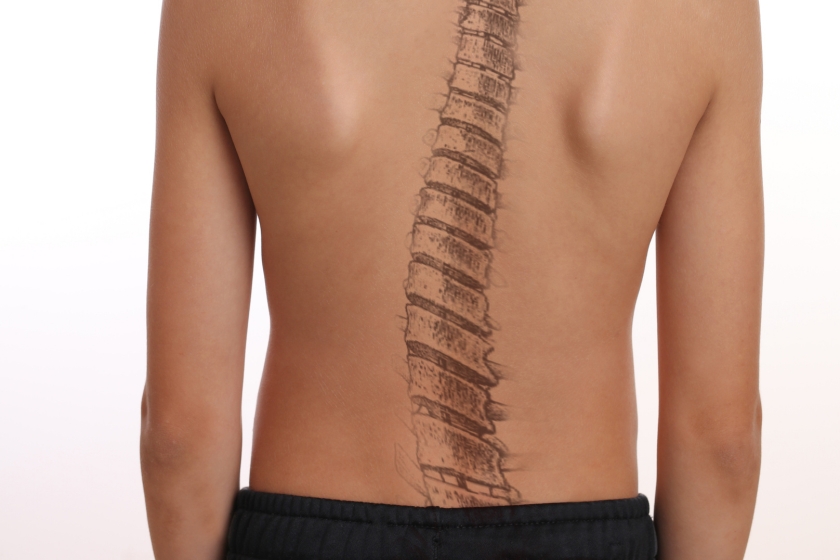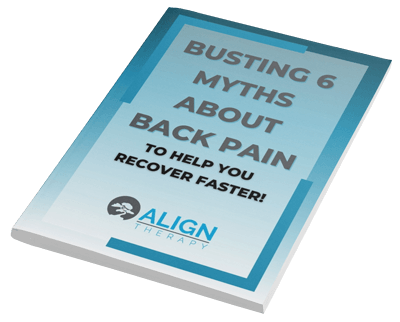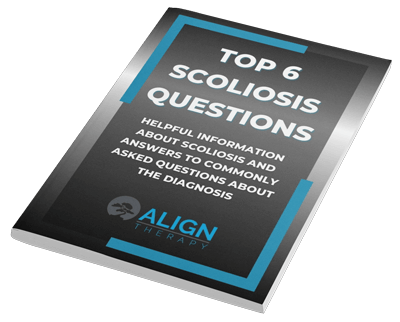At Align Therapy in Lehi, Utah, we see many kids and teens for scoliosis treatment—often right after a diagnosis from their pediatrician or orthopedist. Parents walk through the door carrying two things: their child’s X-rays (usually on their phone now) and a million questions swirling in their heads.
Just today I sent an email to a concerned parent answering her…no joke…58 questions about her daughter! I think that is a record. And I haven’t even seen her yet!
This is completely normal. When your child has scoliosis, you want clear answers, reassurance, and a solid plan before moving forward.
Over the last 11 years treating scoliosis, I’ve noticed parents seem to ask the same five questions during their first visit. These questions come from a sincere desire to do what is best for their child. In this blog post, I will discuss each one, explain what’s behind it, and share the answers I give to parents in the clinic.
My goal is to help you feel informed, confident, and hopeful about your child’s scoliosis treatment journey and know what to do next.
1. “Will my child need surgery?”
This is the big one! Often, this comes before all others. When a parent hears the word “scoliosis,” one of the first images that may come to mind is their child recovering from back surgery, or of someone they know who has had back surgery.
The good news!: most kids with scoliosis will never progress to needing surgery.
Whether surgery is recommended or not depends on a few key factors:
- Size of the curve (measured in degrees using an x-ray to determine the Cobb angle)
- How much your child is still growing—growth spurts are when we usually see more progression of the curve.
- Whether the curve is worsening over time. Curves that get worse have a higher risk of getting worse in the future.
For example, a small curve in a child who is nearly done growing is much less likely to need surgery than a large curve in a child who hasn’t even hit their first growth spurt.
This is where early detection and early scoliosis treatment can make a huge difference. The sooner we start working to stabilize and improve the curve, the better the chances we can keep it from ever reaching a surgical range. Treatment is always better when done early.
At Align Therapy, we focus on active, non-invasive treatment methods, most notably the Schroth Method. When we catch scoliosis early and treat it consistently, surgery often becomes unnecessary. Combining this with bracing when needed can also improve our outcomes.

2. “Will this get worse as my child grows?”
The short answer: It might…but we can do something about it!
Scoliosis can progress during growth, especially during puberty when bones and bodies grow quickly. For some kids, the curve stays stable. For others, it can change rapidly in just a few months. That’s why we recommend regular monitoring, sometimes every 3-6 months, so we can catch changes early. At our clinic, we use clinical measurements and surface topography to monitor for those changes.
When parents hear “monitoring,” they sometimes think it means “wait and see,” but that’s not what we do. Monitoring is active! It’s paired with scoliosis-specific exercises, postural corrections, and sometimes bracing when needed to control the curve while the spine is still growing.
You can think of it like tending a young tree. You wouldn’t just “wait and see” if it leans too far. You would stake it, guide it, and keep checking it until it’s strong enough to stand straight on its own. Your child’s spine is similar.
3. “Can my child still play sports or be active?”
I love when parents ask this, because the answer is almost always a definite YES. I love watching the relief wash over their faces when they hear the answer.
In fact, for most kids with scoliosis, staying active is one of the best things they can do. Activity helps maintain flexibility, muscle balance, and cardiovascular health. It also boosts confidence and social connection, which are also important to your child’s well-being.
Now, there are a few things to remember:
- If a sport causes pain, we might adjust how much your child plays or modify certain movements. They also might need more strength to participate without pain.
- For activities with heavy one-sided loading (like carrying a heavy backpack on one shoulder), we make adjustments to reduce the strain on one side of the body to create more symmetry.
- We also may suggest pairing sports with scoliosis-specific exercises to counteract imbalances. Teaching them how to integrate the postural corrections can be especially helpful for sports and daily life.
Here are a few examples:
- Swimming: Can help increase general strength and endurance. It is good for those who may be having pain with weight bearing activities.
- Dance and gymnastics: Great activities to build postural control and body awareness, but we also need to be careful of end range stress on the spine.
- Running and team sports: Generally fine, and they can improve strength and flexibility.
The big takeaway: scoliosis treatment should help your child do more, not less.
4. “What treatment options are there besides bracing or surgery?”
Many parents are surprised to find out that scoliosis treatment isn’t just “brace or surgery.”
Bracing can be an effective tool in moderate cases, and we use this frequently, but it’s not the only option. For mild to moderate curves, scoliosis-specific physical therapy can make a real difference.
At Align Therapy, we use the Schroth Method, which is a research-backed program of exercises designed specifically for scoliosis. These exercises are designed to:
- Reduce curve progression by addressing the underlying spinal asymmetry and helping the child to hold their back in a better alignment.
- Improve posture and alignment with more awareness during daily life.
- Strengthen weak muscles and stretch tight ones to improve their ability to maintain postural corrections.
- Relieve discomfort from muscle imbalances that are caused by the scoliosis curve.
Unlike general physical therapy, Schroth exercises are focused on your child’s specific curve pattern. That means every stretch and exercise is chosen to work with their spine.
We often combine Schroth therapy with lifestyle guidance, home exercises, and, when appropriate, bracing. The key is customization, because no two curves are the same and definitely shouldn’t be treated the same.

5. “How will this affect my child’s future?”
This is the question that is really on most parent’s minds. Parents are really asking, “Will my child be okay?”
The honest answer: Yes, scoliosis may be part of your child’s story, but it does not have to define or limit them.
With the right scoliosis treatment plan, the majority of kids go on to live active, pain-free lives. I’ve worked with teens who later became competitive athletes and dancers, and some have even become professional rock climbers. Others have just gone on to enjoy everyday life without scoliosis holding them back from their goals and aspirations.
The two biggest factors in future success are:
- Early intervention – starting treatment before the curve progresses too far. It is much easier to treat a curve before it progresses.
- Consistency – keeping up with scoliosis specific exercises and follow-ups, even when back pain and significant imbalance are not evident.
And just as important: the emotional side of scoliosis care. Kids who feel supported and in control of their treatment tend to adapt better and have more self confidence.

Final Thoughts & Next Steps
If your child has just been diagnosed with scoliosis, it can feel very overwhelming. There’s fear of the unknown and worry about the future. There is also a sense of urgency to do the best for your child.
The good news is you don’t have to figure it out alone. These five questions are just the beginning of the conversation, and the earlier you start that conversation, the more options you’ll have.
At Align Therapy, we offer a Free Discovery Visit. This is a chance for you and your child to meet with a scoliosis specialist, review their X-rays, ask your questions, and learn what treatment options make the most sense for your specific situation. There’s no pressure. Just clear guidance from someone who understands scoliosis and treats it on a daily basis. Click here or call (801) 980-0860 to book your free visit!
Your child’s spine is growing, but so is your ability to protect it. Let’s work together to make sure it grows in better alignment.
—David Butler, Physical Therapist
More Free Resources:
Read our blog – Discover the Benefits of Physical Therapy for Managing Adult Scoliosis – Align Therapy Clinic, Utah
Check out what others are saying – Google Reviews
Learn more about us – Meet the Team



